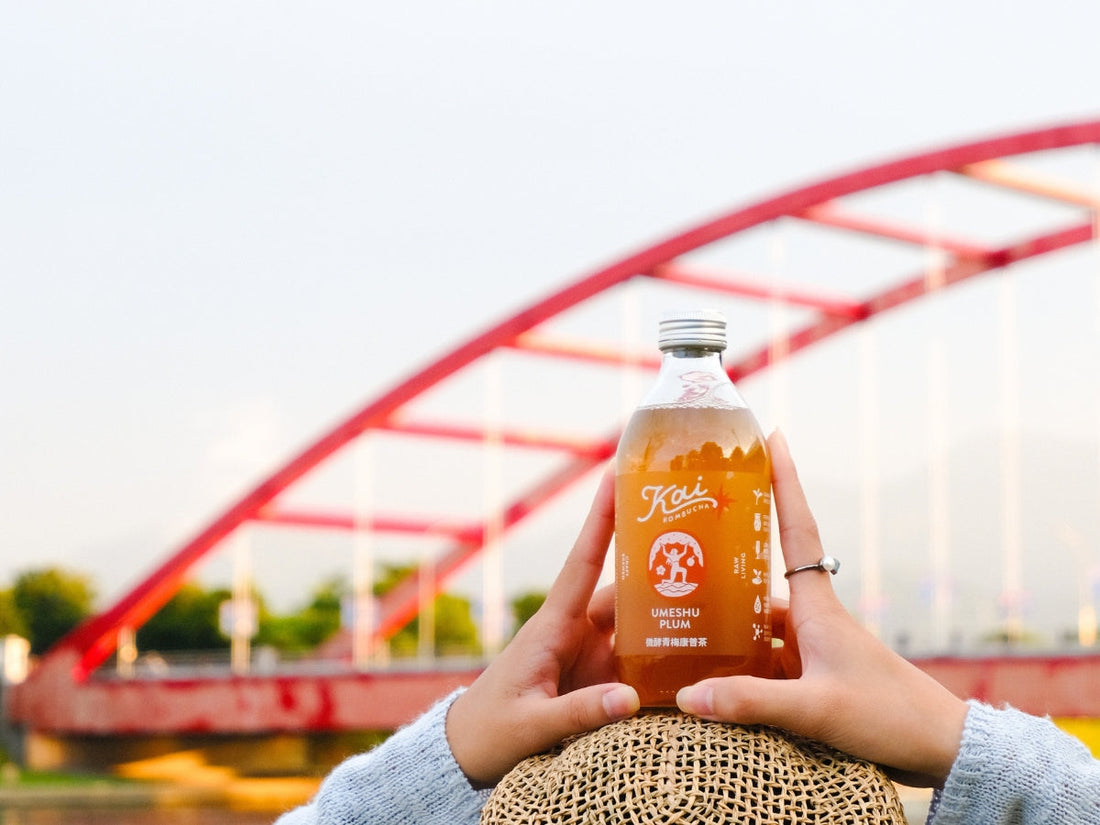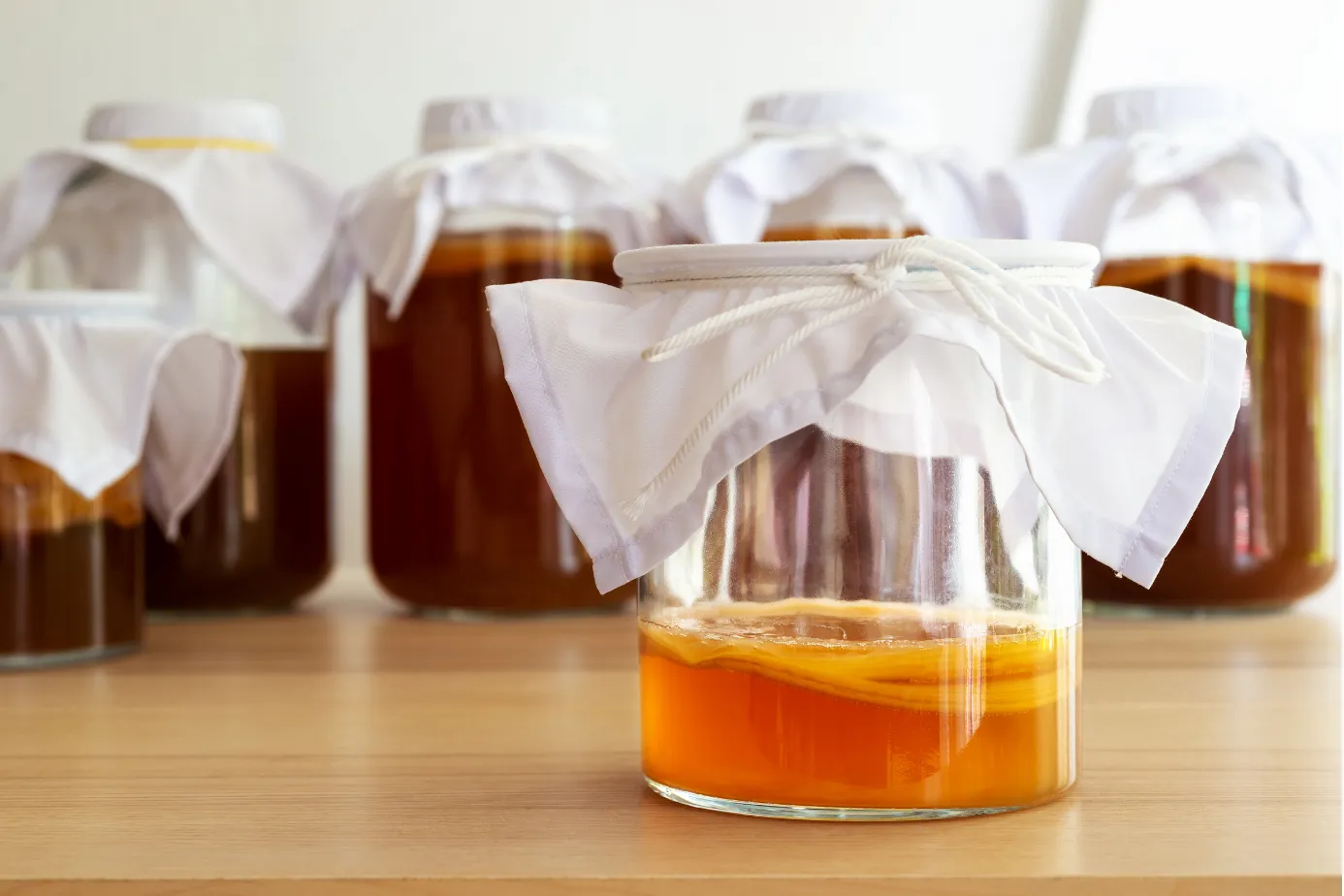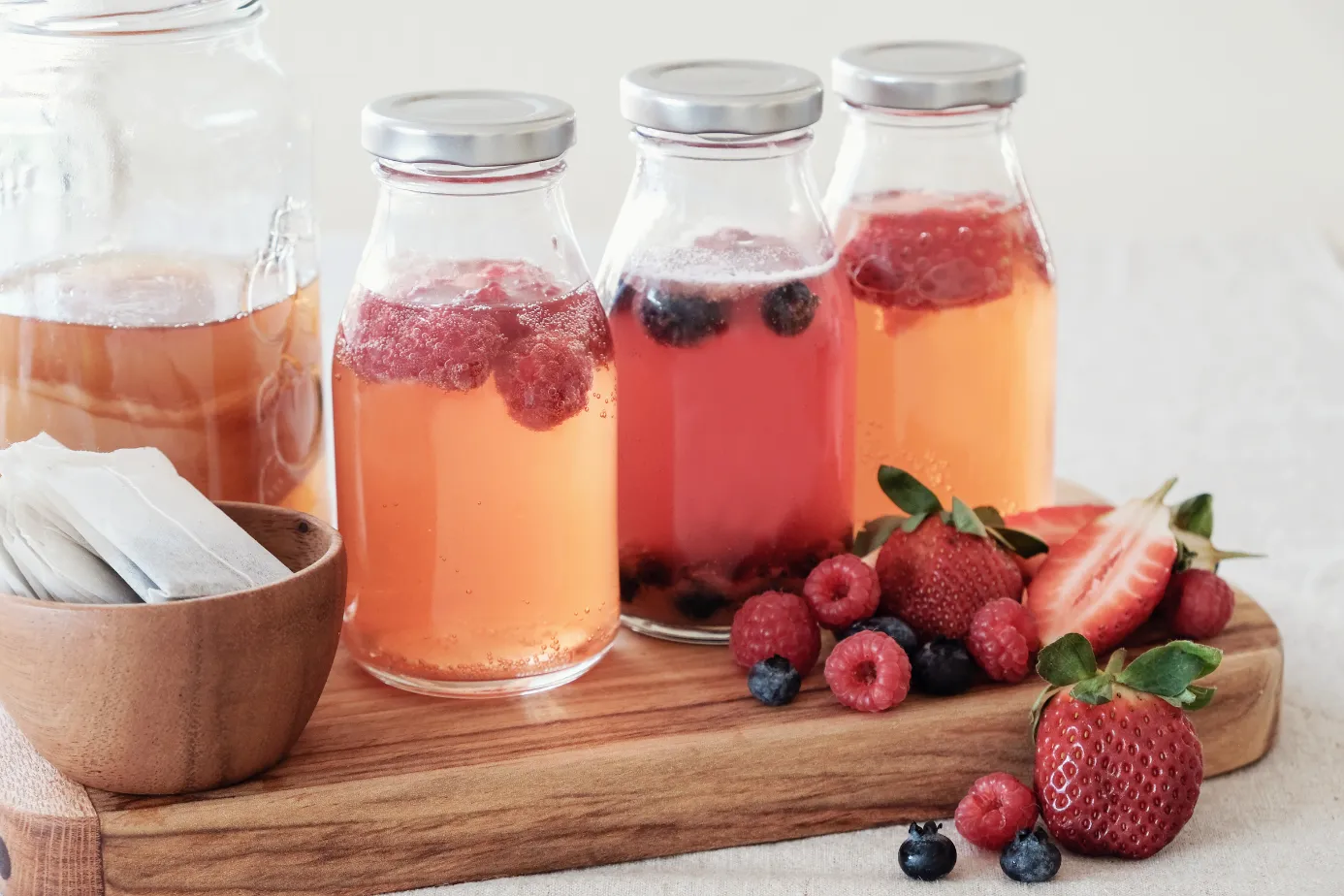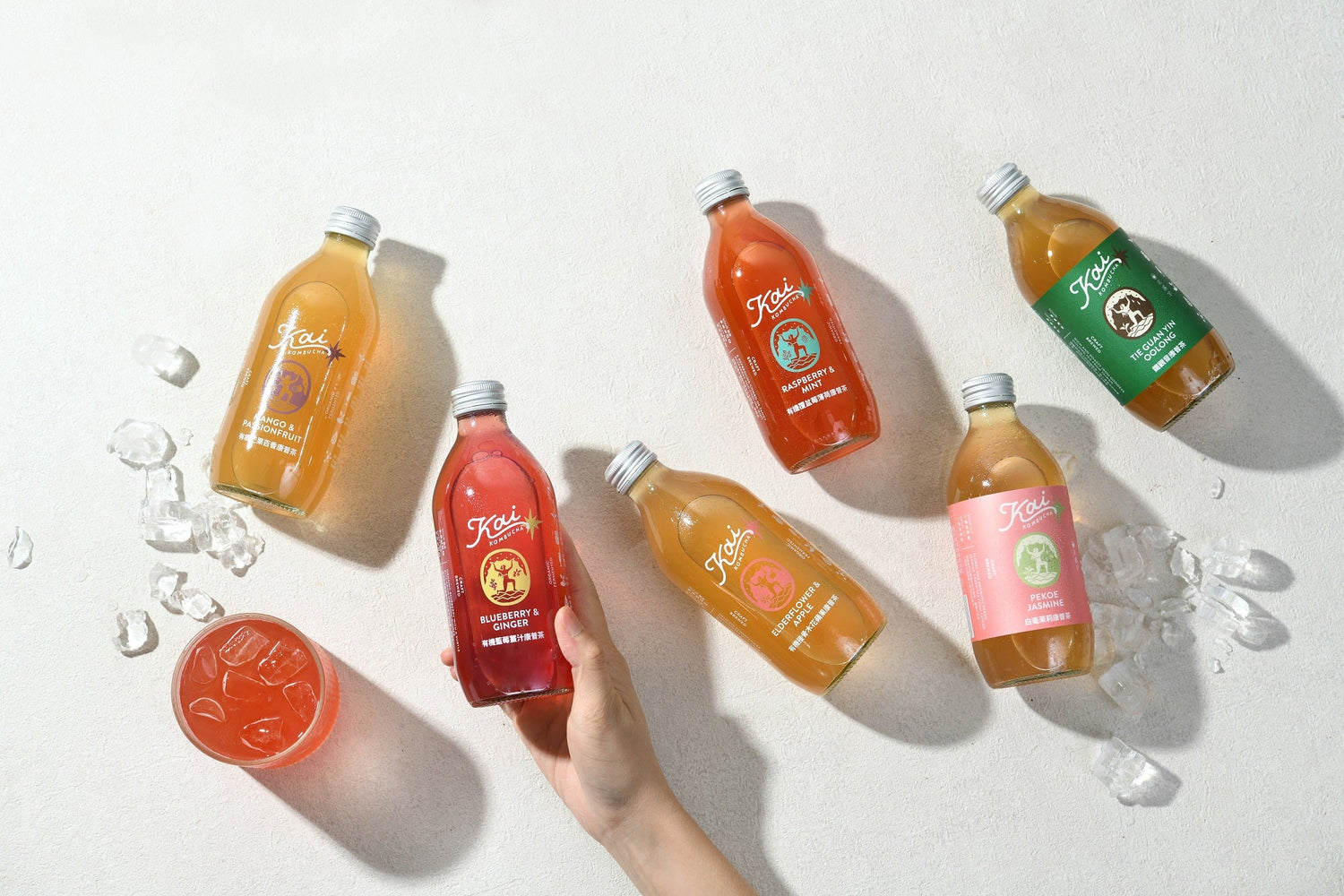
Professional brewers share their kombucha recipes! Kombucha proportions, tea leaves, and kombucha membranes reveal the key to good taste
Share
Kombucha, a live mushroom drink brewed with kombucha, sugar, and water, is not only popular in more and more restaurants because of its unique sweet and sour taste, simple ingredients, and flexible seasoning. , coffee shops have introduced it as a healthy meal companion, and it has attracted many gourmets to study how to brew kombucha at home. This article will share the principles of kombucha, key steps in the fermentation process, and methods to add flavor, to help you better understand how to brew delicious kombucha!
In the previous article, we learned about the basic elements of making kombucha: kombucha (Scoby), sugar, tea and water, as well as the functions of kombucha. Now let us learn step by step how to prepare these ingredients, the equipment required, and brew. Steps that require special attention during the production process.
Kombucha recipe: Ingredients preparation
Kombucha is alive and kicking, like a restaurant playing live jazz, where kombucha, sugar, tea and water are key partners
-
Kombucha: a lively jazz band
It may not look very pleasing at first glance, but in fact, the charming gelatinous mass is the soul of kombucha, "kombucha", which is composed of symbiotic yeast and bacteria. It is like a jazz band, each with different skills but interdependent. When paired with each other properly, it will successfully complete a wonderful kombucha performance. To achieve good results, the quality of the kombucha culture is very important. For example, Kai Kombucha is a high-quality culture imported from North America, which is fermented with fresh and complete culture.

-
Tea: Various beautiful tunes
Through fermentation, the tea soup will become a delicious drink that is sour, sweet, and slightly bubbly. The role of tea here is like the "melody" in the performance, such as black tea, green tea, and oolong tea. They also come from the tea tree, but they are matured in the same way. Slightly different. Choose from different tea base types and you'll create kombucha with a variety of flavors. Kai Kombucha uses red oolong tea leaves grown by small farmers in Taiwan. After fermentation, the kombucha releases a warm tea aroma.
-
Sugar: audience applause and tips
Many people often wonder whether kombucha can "remove sugar", and the answer is: no. Just like a jazz band cannot live without an audience and tips, kombucha cannot live without sugar. When brewing kombucha, sugar provides nutrients for yeast and bacteria to smooth the fermentation process. Friends who are afraid of consuming too much sugar don’t have to worry too much. The sugar will be cracked and used during the brewing process, and can be reduced by up to 80% after 30 days . We recommend using organic cane sugar and remind you not to use artificial sugar substitutes, sweeteners, etc., as they are not natural and not suitable for assisting fermentation.
-
Water: comfortable restaurant venue
Just like an orchestra performs better in a good venue, kombucha can show its talents only when it is firmly established in good water! All kinds of water can be used to brew kombucha, but the most important thing is that it doesn’t have any contaminants that could harm the bacteria! Just like water affects the taste of bread or the production of wine, the minerals in the water may also affect the taste and health of the bacteria in kombucha. In addition to a clean water source, remember to make sure the water does not contain chlorine, otherwise its antibacterial effects may accidentally kill kombucha’s good bacteria.
How to determine the proportion of kombucha? What are the brewing steps?
To make your own kombucha, please refer to the basic recipes and equipment in the "Kombucha Bible":
-
4 liters of water
-
4-6 tea bags or 1-2 spoons of tea leaves (black tea or oolong tea)
-
200 grams sugar
-
1 whole kombucha membrane
-
800ml kombucha (for fermentation/starting liquid)
-
Clean cotton cloth and sterilized container (glass or ceramic jars are recommended, avoid metal containers)

Simple steps to brew kombucha:
-
Add 1 liter of boiling hot water to the tea leaves to make tea soup, then add sugar and stir evenly, then pour them into the brewing container.
-
Pour the remaining 3 liters of cold water into the brewing vessel and allow the liquid to slowly cool to room temperature until the hot water has cooled.
-
Place the kombucha membrane into the brewing vessel and pour the fermentation liquid (use distilled white vinegar if you don't have kombucha) on top of the liquid.
-
Cover the container with a clean cotton cloth and secure it with a rubber band.
-
Place the container in a warm, dry place out of direct sunlight (preferably 24-29 degrees Celsius).
-
Let it ferment for 7-21 days, during which time you can look at it every day and even talk to it (kombucha is alive! Please treat it with love!)
-
Wait patiently and the symbiotic bacteria will start eating the sugar and fermenting it. You can try it by scooping it out with a clean spoon every day. When the sourness gradually develops and the taste meets your preference, it’s done!
-
Before bottling, you can take at least a cup of the liquid from the top and put it into a small airtight jar to use as fermentation liquid for your next brew. The remaining kombucha can then be bottled and enjoyed as is, or flavored and diluted to your preferred kombucha ratio.
Kombucha secondary fermentation? What to pay attention to?
You may find that the kombucha that has completed its initial fermentation does not have the bubbles you want because most of the carbon dioxide has dissipated into the air. The reason why many craft kombucha can have a comfortable bubbly feeling is because of "secondary fermentation", that is, after the first fermentation, fresh fruits or spices are added for flavoring and put into bottles for 3- Second fermentation in 5 days.
For example, during the secondary fermentation of the Kai Kombucha Natural Fruit Flavor Series, Taiwanese mangoes, passion fruits, or imported blueberries and raspberries are added. The secondary fermentation of kombucha will not only increase the taste and layer by adding fruits and spices, but the carbonation of the tea soup will also be more obvious. At this time, as long as the lid of the sealed jar is tightly closed and the liquid contains enough yeast and sugar, the yeast will produce carbon dioxide when consuming the sugar, giving the kombucha a more fizzy taste. ※Kombucha at this time is like carbonated soda. Remember not to shake the kombucha vigorously and store it in the refrigerator to slow down the fermentation rate!
 Besides brewing it yourself, where can I buy delicious kombucha?
Besides brewing it yourself, where can I buy delicious kombucha?
Although it is not too difficult to make basic kombucha, how to accurately control the proportion of strains, fermentation temperature, humidity and environment is a profound knowledge, and the disinfection and cleaning of utensils and brewing process are even more important for food safety. the biggest consideration. If you don’t have the time or energy to slowly research brewing kombucha, there are many high-quality craft kombucha options on the market in recent years. When buying kombucha, remember to pay attention to whether it is a legally registered brewery and whether the ingredients are natural and without additives, so as to ensure that you can drink it happily and with peace of mind!
Further reading:
>>Wanna drink kombucha now? Buy Kai Kombucha Recommended Flavors Online
>> Learn more about craft kombucha: The brewing process of Kai Kombucha
>>Kombucha benefits? side effect? Learn about kombucha ingredients and benefits
Disclaimer: There is no perfect food in the world, and kombucha is not omnipotent. The ingredients will change at each stage due to slight differences in fermentation liquid, time, temperature, etc. during the brewing process. Do not use it to treat any disease rashly. If you have special needs and concerns, please be sure to consult a professional doctor.
References:

